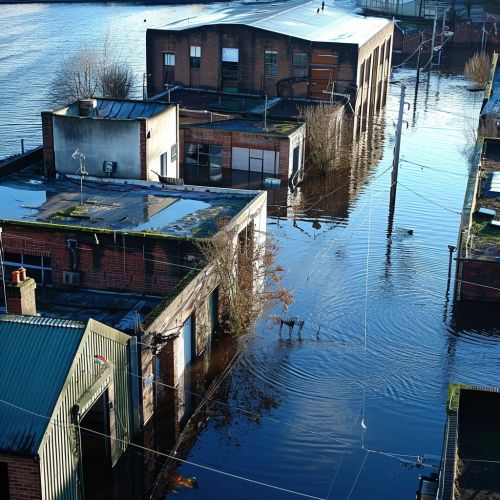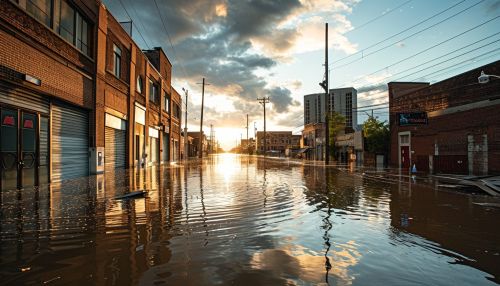Flooding
Introduction
Flooding is a natural disaster that occurs when an area that is normally dry is inundated with water. This can occur as a result of heavy rainfall, rapid snowmelt, or a dam break. Flooding can cause significant damage to infrastructure, property, and the environment, and can also pose a risk to human life. Hydrologists and other scientists study flooding in order to better understand its causes, impacts, and how to mitigate its effects.
Causes of Flooding
There are several causes of flooding, each with its own unique set of circumstances and impacts.
Heavy Rainfall
Heavy rainfall is the most common cause of flooding. When the amount of rainfall exceeds the capacity of the soil to absorb it, or the capacity of rivers and streams to carry it away, flooding can occur. This is especially likely in areas with poor drainage systems or where the ground is already saturated from previous rainfall.
Rapid Snowmelt
In colder climates, flooding can occur as a result of rapid snowmelt. When temperatures rise quickly after a heavy snowfall, the snow can melt faster than the ground can absorb the water or rivers can carry it away. This is often exacerbated by frozen ground, which is less able to absorb water.
Dam Breaks
Flooding can also occur as a result of a dam break. This can happen due to structural failure, overtopping, or deliberate destruction. Dam breaks can cause catastrophic flooding, as a large volume of water is suddenly released.
Impacts of Flooding
Flooding can have significant impacts on both human societies and the environment.
Damage to Infrastructure and Property
Flooding can cause extensive damage to infrastructure and property. Roads, bridges, buildings, and other structures can be damaged or destroyed by floodwaters. This can disrupt transportation, communication, and other essential services, and can also result in significant financial losses.
Risk to Human Life
Flooding can pose a serious risk to human life. People can be injured or killed by floodwaters, either by drowning or by being hit by debris carried by the water. Floodwaters can also contaminate drinking water supplies, leading to outbreaks of waterborne diseases.
Environmental Impacts
Flooding can also have significant environmental impacts. It can cause soil erosion, damage to plant and animal habitats, and pollution of rivers and other bodies of water. In some cases, however, flooding can also have beneficial effects on the environment, such as replenishing soil moisture and nutrients, and providing habitats for certain species of wildlife.
Flood Mitigation
There are several strategies for mitigating the impacts of flooding. These include structural measures, such as building levees and dams; non-structural measures, such as land use planning and flood forecasting; and community-based measures, such as public education and emergency preparedness.
Structural Measures
Structural measures are physical constructions designed to prevent or reduce flooding. These include levees, dams, and floodwalls, which are built to contain floodwaters; and drainage systems, which are designed to carry floodwaters away.
Non-Structural Measures
Non-structural measures are strategies that do not involve physical constructions. These include land use planning, which involves regulating development in flood-prone areas; and flood forecasting, which involves predicting when and where flooding will occur, and issuing warnings to affected communities.
Community-Based Measures
Community-based measures involve the participation of local communities in flood mitigation efforts. These include public education, which involves teaching people about the risks of flooding and how to protect themselves and their property; and emergency preparedness, which involves planning and practicing for flood emergencies.


